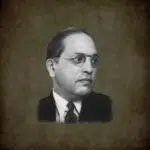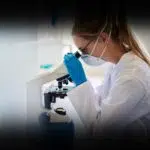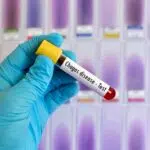Pathologists’ Assistants Day is celebrated on April 14 annually. P.As are undervalued in the pathology laboratory and do not receive the recognition they deserve. As a result, this day is set aside every year to celebrate their vital contributions to correct diagnosis and better patient care. A P.A. is a trained health worker who works under a pathologist’s guidance and supervision to provide various services. Sanctuaries of the Southeastern Pathological Association are academically and practically trained to handle laboratory specimens accurately and promptly.
History of Pathologists’ Assistants Day
P.As are supervised by a board-certified anatomical pathologist, who makes the final diagnosis based on the P.A’s extensive gross examination and tissue submission for microscopic assessment. Eugene A. Stead is regarded as the founder of the physician assistant profession. He established the first formal educational program to educate P.As at Duke University in 1965. Thomas D. Kinney and Duke University started the first formal university-based training program for pathologists’ assistants in 1969. 14 recognized programs have been developed to date in the U.S. and Canada.
The American Society for Clinical Pathology (A.S.C.P.) is a Chicago-based professional organization. The A.S.C.P., founded in 1922, offers patient, pathologist, and lab professional education, certification, and advocacy activities. Passing the A.S.C.P. exam is a requirement for Pathologists assistants.
The organization’s founders founded the American Association of Pathologists Assistants on April 14, 1972. This association was established to promote the mutual integration of trained pathologists, to bring about interests that will further the pathologist profession, including promoting ethical behavior in that profession, promoting education of pathologist assistants, and educating the public and the health sector about the function of a professional pathologist’s assistant. A.A.P.A. has expanded to over 2,100 members with our five founding fathers since its inception.
Pathologists’ Assistants Day timeline
A professional association called A.S.C.P. is created in Chicago, Illinois, to provide education, certification, and advocacy programs on behalf of patients, pathologists, and lab professionals.
The first physician assistant training program is successfully created.
Eugene A. Stead, a physician and educator, develops the concept of physician extenders in 1966.
To advocate for and develop the field of pathologists' assistants, allied health professionals establish the non-profit American Association of Pathologists' Assistants (A.A.P.A.) in 1972.
Pathologists’ Assistants Day FAQs
What is a Home office pathologist?
Home Office-registered forensic pathologists work within regional group practices independent of the police, coroners, and the Home Office.
What are the educational requirements for pathologists?
To become a Pathologist, you need a Bachelor’s degree in Biology or Chemistry or a five-year degree in Medicine, a two-year general training foundation program, or a three to a seven-year internship or specialist training program in Pathology.
What is the P.A. duration?
A pathologist’s assistant requires around six years of post-secondary education.
How to Observe Pathologists’ Assistants Day
Follow the pathologist assistant day blog
If you're a pathologist's assistant, you can follow and comment on the Pathologists Assistants Day Blog. You can upload photos to the “P.A. Day Gallery” if you have them.
Send a basket of goodies
Treat a pathologist assistant today if you know one. Consider sending a gift basket if you cannot treat them to lunch. They will undoubtedly feel valued as a result of this.
Give a shout-out on the internet
If you don't know a P.A. directly, you can make a general post thanking all P.As. Use the hashtags #PathassistDay on social media to encourage others to do the same!
5 Facts About Pathologists' Assistants Day
Rosalind Franklin University of Medicine and Science
Rosalind Franklin University of Medicine and Science has the most recipients of pathology assistant degrees.
21,292 active pathologists
The American Medical Association had 21,292 active pathologists.
Average annual salary for Pathologist assistant
In terms of remuneration, a P.A's average yearly salary ranges from $60,000 to $90,000.
Options for Pathologist assistants
Quality control technicians, pathologists, senior managers, and technical medical writers are options for pathologist assistants.
Accreditation for pathologist assistants
The A.A.P.A. teamed up with the A.S.C.P. in 2004 to obtain nationwide accreditation for Pathologist Assistants.
Why Pathologists’ Assistants Day is Important
It shows the importance of workplace teamwork
The day is a friendly reminder that it's a team effort at work. It is not only about the Pathologists. Even though pathologists handle the major medical cases, their work is made significantly easier by P.As who play a crucial role in the laboratory, collecting and evaluating bodily tissues.
It increases productivity
Recognizing the work made by pathologist assistants would make them feel valued. Appreciating them will lead to increased production and work ethic.
It recognizes the efforts of Pathologists assistants
We must confess that P.As don't always get the credit they deserve for their vital role in the pathology lab. This day is a superb opportunity to thank and appreciate the dedicated pathologist assistants who work tirelessly behind the scenes and acknowledge their contributions to medical research and case resolution.
Pathologists’ Assistants Day dates
| Year | Date | Day |
|---|---|---|
| 2026 | April 14 | Tuesday |
| 2027 | April 14 | Wednesday |
| 2028 | April 14 | Friday |
| 2029 | April 14 | Saturday |
| 2030 | April 14 | Sunday |





















